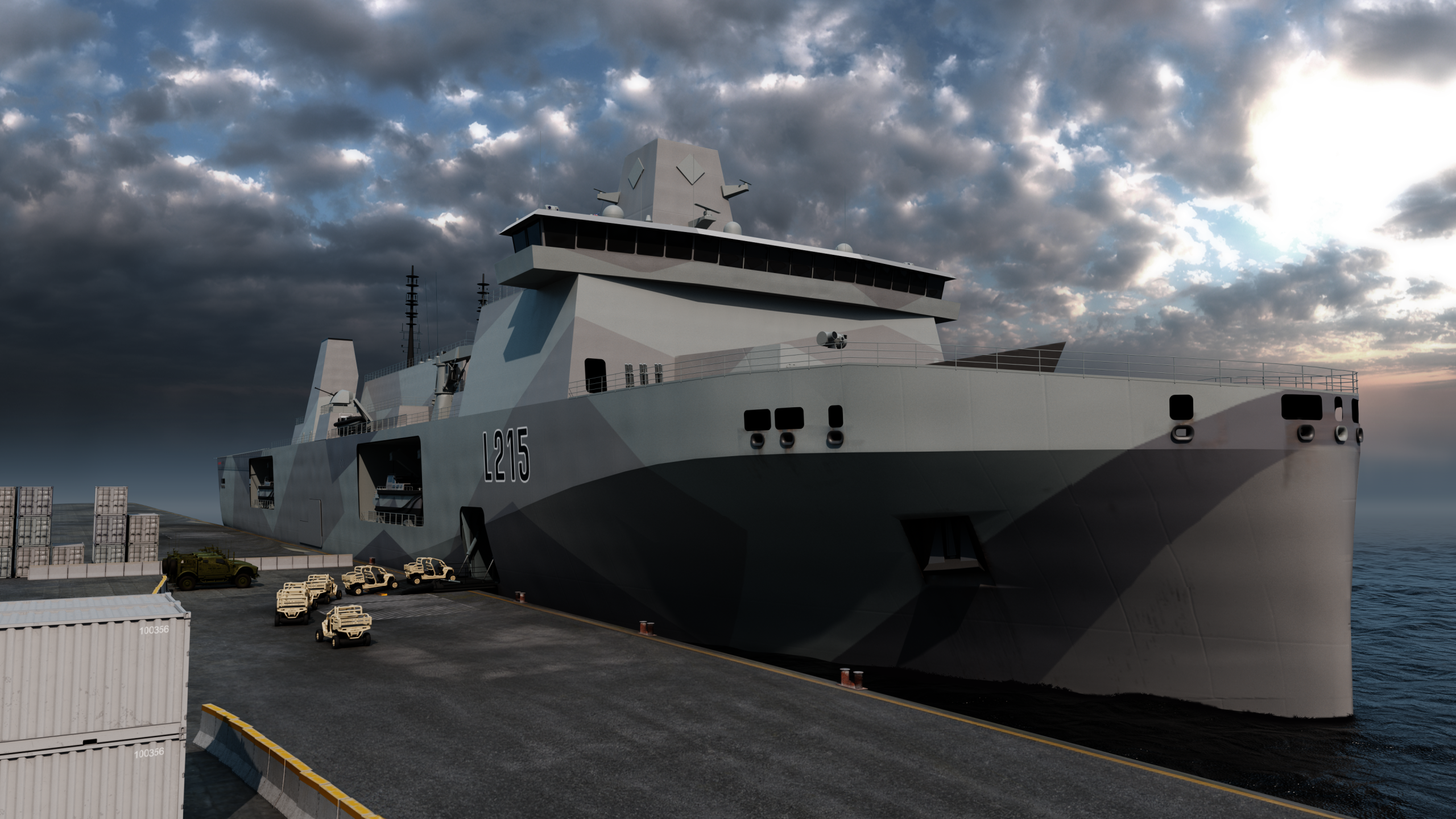 BMT has unveiled the ELLIDA STRIKE – a forward-looking conceptual design of what a future multi-role strike ship could offer the UK Royal Navy. BMT’s ELLIDA STRIKE has been developed to align with the Royal Navy’s future amphibious fleet recapitalisation, aiming to replace ageing ships with a new generation of versatile and adaptable vessels. Created to explore many facets of next-generation littoral strike design – while drawing on aspects of the evolving MRSS programme but not representing a specific solution – the concept demonstrates how modern design principles can address complex operational requirements across missions ranging from humanitarian aid to high-end warfighting.
BMT has unveiled the ELLIDA STRIKE – a forward-looking conceptual design of what a future multi-role strike ship could offer the UK Royal Navy. BMT’s ELLIDA STRIKE has been developed to align with the Royal Navy’s future amphibious fleet recapitalisation, aiming to replace ageing ships with a new generation of versatile and adaptable vessels. Created to explore many facets of next-generation littoral strike design – while drawing on aspects of the evolving MRSS programme but not representing a specific solution – the concept demonstrates how modern design principles can address complex operational requirements across missions ranging from humanitarian aid to high-end warfighting.
Reflecting on lessons from recent defence reviews and the Royal Navy’s detailed MRSS requirements, ELLIDA STRIKE emphasises scalable capability, modularity and the integration of advanced technologies such as uncrewed systems and flexible well dock operations. The vessel has been designed for operation, with careful consideration of rapid personnel flow and human factors efficiency. This approach resonates with the Navy’s ambition for platforms that support dispersed, forward-deployed commando forces, robust crisis response and seamless adaptation to emerging threats and operational contexts.
“Having once commanded a ship of this class, I can say with confidence that ELLIDA STRIKE is the kind of platform every naval officer would want under their command,” said Tim Neild CBE, Head of Business Development, UK & Europe at BMT. “It’s engineered for mission success and reflects our commitment to supporting the Royal Navy’s future amphibious ambitions.”
ELLIDA STRIKE is designed from the keel up to reflect uncompromising naval standards and optimal operational flow. While not a direct answer to the anticipated MRSS specification, it showcases design elements that are relevant and demonstrates the full range of capabilities which would protect the vessel in demanding conditions and support a wide range of missions. The concept prioritises efficient construction and real-world operability, offering a credible vision of what a future amphibious platform could look like.
“Every line of this ship has been drawn with purpose,” said Andy Kimber, BMT’s Chief Naval Architect. “From propulsion to topside arrangement, ELLIDA STRIKE is engineered to deliver mission success in any theatre.”
The ELLIDA STRIKE concept is designed around modularity, enabling rapid reconfiguration for mission-specific roles such as medical support, command and control, logistics or combat readiness through containerised PODS. Its strike capability integrates long-range precision missile systems, enhancing fleet lethality and operational reach. The ship supports combined air manoeuvre operations, capable of launching and recovering both crewed and uncrewed rotary platforms, which adds flexibility and redundancy to mission planning.
A welldeck facilitates efficient launch and recovery of landing craft and autonomous vessels, vital for amphibious assaults and humanitarian missions. At its core, ELLIDA STRIKE features a robust digital backbone that enhances connectivity and supports advanced command and control systems. The design also prioritises human-centric principles, with ergonomic layouts that improve onboard living and working conditions, ultimately boosting crew well-being and mission performance.
“Whilst ELLIDA STRIKE is not the final answer, it’s a strong foundation for further development”, says Neild. “It invites discussion, collaboration and refinement. As the Royal Navy continues to shape its requirements, we stand ready to adapt and evolve our design to meet the needs of tomorrow’s operations. This concept represents a capability-led approach to design – showcasing what’s possible and demonstrating that BMT has both the expertise and the openness to partner as requirements mature.”















Given the urgency reflected in the Ghost Shark program, maybe cancelling SEA 2200 wasn’t such a great idea.
I wonder if this might be something that is revisited in the next DoD budget? Maybe a joint UK/AUS design build.